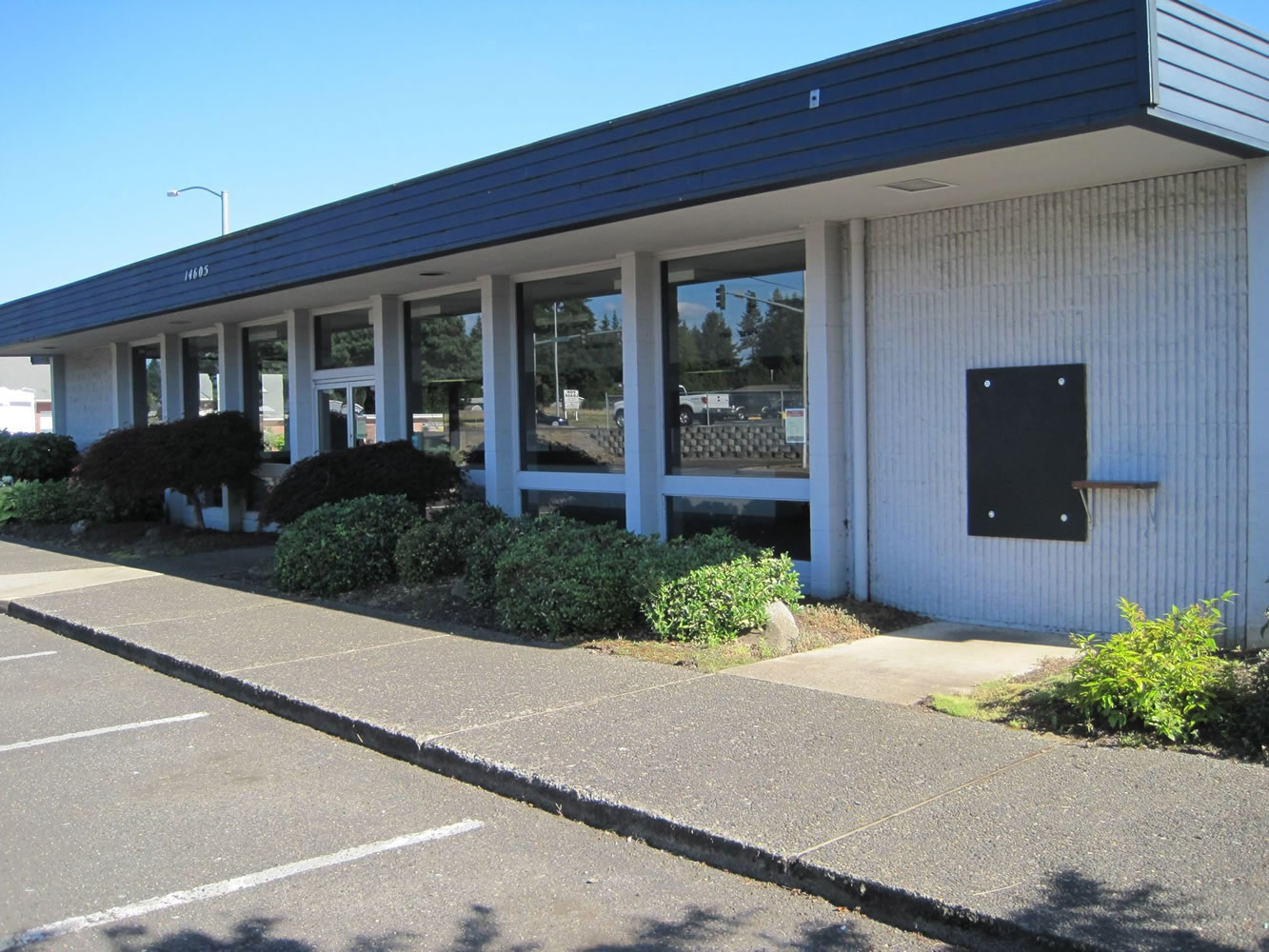Wanna buy a bank?
First Independent has five former branches for sale in Clark County. City or country — take your pick.
The Vancouver-based bank has gone through a wave of branch closures during the economic downturn. Now it’s found that unloading those branch buildings is no easy task in an already saturated commercial real estate market. And having a concrete vault as a huge immovable object at their center doesn’t help.
The vault is “either unusable or it has to be used in a creative manner,” says Pam Lindloff, an associate vice president at NAI Norris Beggs & Simpson, who is marketing some of the former bank buildings. On the plus side, Lindloff says, the drive-up windows are a valuable asset that appeals to some potential retail buyers.
One irony that makes for a tough selling job is that, according to Lindloff, interested buyers are having trouble getting money from a bank that’s still open.
“The lending market is so challenging that it’s difficult to get financing,” Lindloff says.
The buildings for sale in Vancouver are in Sifton, on Northeast Fourth Plain Boulevard at Northeast 147th Avenue, which closed in May 2010; and the former Minehaha branch at 4500 N.E. St. Johns Road, which merged with the International Branch in May of this year.
Former branches also are for sale in Carson, Camas, and La Center. First Indy has leased out a former branch in Bingen to a real estate office. The bank had leased property for its Woodland branch, so it doesn’t have to worry about that building. (A former Riverview Community Bank branch near the 78th Avenue exit of Interstate 5 also was in a leased building, now vacant).
Unloading the properties isn’t all gloom and doom. The bank recently sold its former Fairgrounds branch in Ridgefield to Delfel Real Estate LLC. It had an undisclosed offer for the Sifton branch, which is adjacent to the site of a proposed Walmart store, but turned down the offer and is now trying again.
One big challenge in finding tenants is parking. Banks typically require less parking than restaurants in building codes, Lindloff says. She sees potential uses for what is called service retail — an investment office or a coffee shop, perhaps — that need less parking but can take advantage of the drive-up window.
First Indy’s decision to close branches carried the obvious risk that customers might go elsewhere. But First Indy was “pleasantly surprised” to lose no more than 10 percent of customers when the branches closed, says Stacey Graham, the bank’s executive vice president and chief strategy officer. Many of the former branch sites have retained ATMs, and about 35 percent of First Indy’s banking transactions are done electronically, matching national trends, Graham says.
But the recession and the rise of virtual banking don’t tell the full story of why First Indy seemed to have far too many branches. Bank founder E.W. Firstenburg, who died almost a year ago at age 97, firmly believed that his banks needed plenty of branches close to where his customers live. He regularly found locations to build ahead of development.
“It often worked out,’ says Graham, citing the bank’s early foothold in Cascade Park as an example. Other times, though, population and retail shifted away from the original branch sites or didn’t expand as expected, she says.
One idea for an old bank building comes from just across the Columbia. David Kerr Violin Shop in Southeast Portland operates in a former branch bank and uses the theft-proof, fire-proof vault to store its highly valuable musical instruments.
Kerr’s not heard of other musical instrument stores in former banks. “But I talk to other companies around the country and they’re envious of what we have,” he says.




